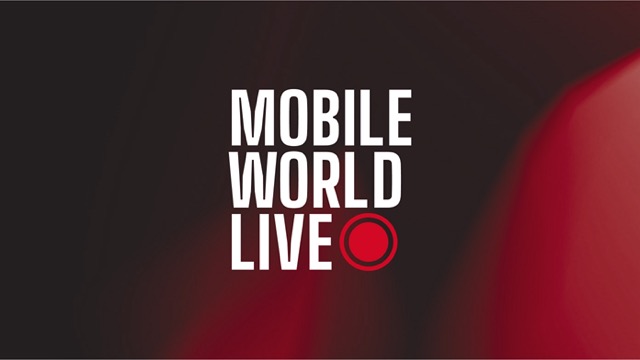By Michael Moorfield, Director of Product at Truphone
PARTNER CONTENT: Whilst forecasts of a huge leap in the number of connected consumer and IoT devices make headlines on a regular basis, how these devices will get connected is often overlooked.
Since 1991 we’ve been using physical SIM cards in our phones and connected devices. Every now and again they get a bit smaller but, even today, we still use them – 6 billion new ones a year!
But we have now hit a ceiling. The ever-faithful SIM card has reached the limit of its ability to scale to meet the insatiable appetite for data and connectivity taking place around the world.
Because SIMs are still physical cards, we have to manufacture them, store them, ship them and handle them, creating friction and impacting the customer experience. Even so, many players in the mobile industry protect this model, seeking to lock customers into networks, higher prices and complex supply chains.
At a time when openness and interoperability are crucial to grow revenue, particularly for the Internet of Things, it is unfortunate that key players in the industry have responded by building their walls higher, instead of knocking them down.
This is understandable. For many organisations in the mobile ecosystem, their nervous system is wired to protecting what they already have.
To many, eSIM presents a threat—after all, it is new. It enables flexibility, choice, simplicity and openness. But eSIM poses a classic prisoners’ dilemma: if industry players choose to limit the positive effects of this new innovation, they will all suffer.
Demand for faster, more intelligent, connected devices is continuing to accelerate and customers depend on the best connectivity options to be available in a simple and secure manner. But to deliver on this, the model of a single SIM card being locked to one network operator for its entire life can no longer hold true. As eSIM is adopted across the entire connectivity supply chain, it will deliver unprecedented freedom and flexibility to customers.
At Truphone, we forecast that, by 2024, seven billion eSIMs will have been activated in consumer and IoT devices around the world.
As we enter 2020, this forecast may seem crazy. Most commentators only talk about new smartphones supporting eSIM and shipments reaching the lofty heights of hundreds of millions in years to come.
We see things differently. The path to seven billion eSIM activations by 2024 is clear:
- The SIM slot will disappear. Inside devices, space is at a premium and needed for new features and better batteries, driving the development of eSIM-only devices.
- It’s all goes digital. We have seen DVDs give way to Netflix, CDs to Spotify, game disks to Steam, cash to contactless, newspapers went online and software moved to app stores. Similarly, consumers will engage with network service providers predominantly through digital channels, leveraging the ability for eSIM to be activated instantly, whilst the 30,000 tonnes of plastic used every year in SIM cards is dramatically reduced.
- The IoT supply chain is global. It’s not scalable, cost-efficient or practical to pre-agree and select SIM cards for devices when you have no knowledge of where they will be used or will travel to. With four billion cellular IoT connections[1] forecast for 2024, integrated eSIMs will allow the decision on which connectivity service to use to be deferred to when the device is actually deployed.
- Data security is non-negotiable. A trusted mechanism to securely send and receive data for more and more connected devices is critical and will be a regulatory requirement in many scenarios. The 25 billion IoT connections[2] (cellular and non-cellular) predicted by 2025 will all need security built in and many of these will be able to leverage the security measures pre-integrated into eSIM to ensure data can be kept protected whilst minimising any additional costs for IoT devices.
- The best connectivity possible. Although only 20 per cent of the cost of an IoT device might directly relate to the connectivity, 80 per cent of the problems experienced by IoT devices are linked to the network connectivity. eSIM provides further flexibility to explore as many different connectivity options as possible.
- The great 5G SIM swap. 5G is on track to account for 15 per cent of global mobile connections by 2025[3] (1.4 billion connections), according to GSMA Intelligence. Many of these 5G-capable devices will require new SIM cards to fully realise the benefits of 5G technology. Many of the 5G activations will simply jump straight to eSIM with 5G support built-in and ready to use.
As these six themes compound, we will see the number of eSIM activations rise dramatically year-on-year.
Fundamentally eSIM is a technology that will keep up with the world around us—far into the future. Billions of eSIM-enabled devices will secure our connectivity and data; billions of new IoT devices will leverage the wide availability of mobile networks; and billions more 5G consumer devices will support advances in mobile computing, entertainment, health and AI. As we enter 2020, we are on the cusp of a major shift in the way devices connect to mobile networks.
At Truphone, we are firmly committed to a future centred on simpler mobile connectivity. We continue to keep inventing—finding new ways to solve new problems and embracing the benefits that eSIM brings to the entire mobile ecosystem.
Truphone will be at MWC 2020 showcasing how we are making eSIM work for you. We’ll be in stand 6H21 in Hall 6 for the duration of the event. Make sure you drop by and say hello.
Download our free eSIM Buyer’s Guide here.
By Michael Moorfield, director of Product at Truphone
[1] GSMA Intelligence
[2] https://www.gsma.com/newsroom/press-release/new-gsma-study-operators-must-look-beyond-connectivity-to-increase-share/
[3] https://www.gsma.com/newsroom/press-release/new-gsma-study-5g-to-account-for-15-of-global-mobile-industry-by-2025/










Comments